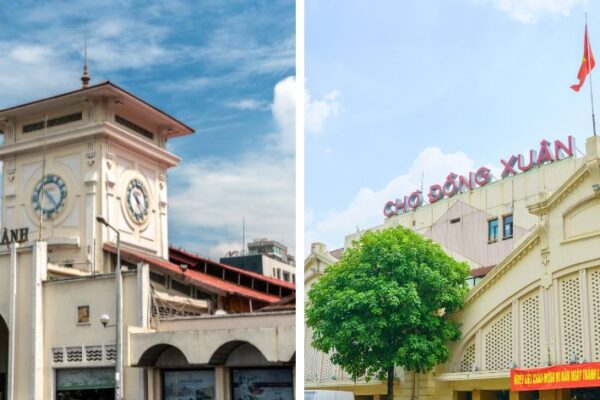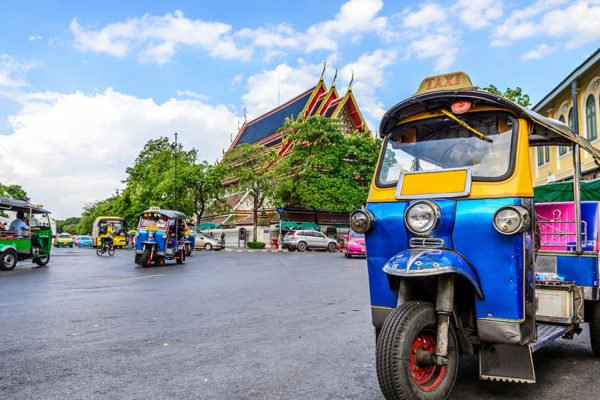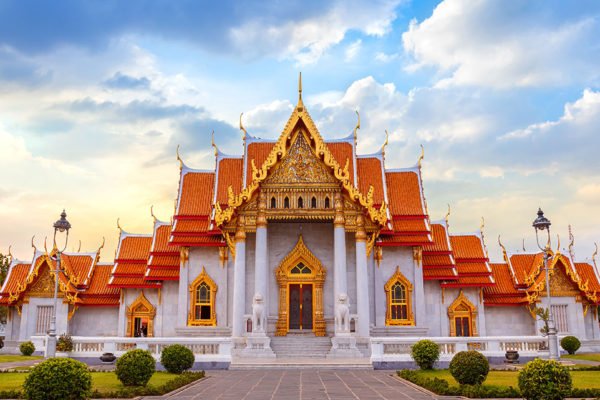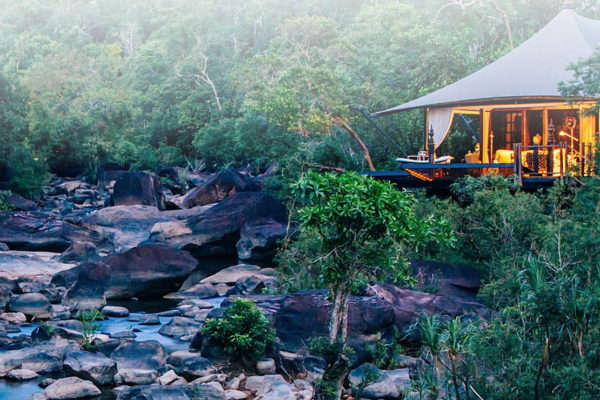Southeast Asia Underrated Cities to Visit: Quiet, Authentic, Affordable

Southeast Asia underrated cities offer a refreshing travel experience filled with culture, nature, and local warmth. These quiet destinations promise authentic charm, affordable stays, and fewer crowds than major tourist hubs. Travelers can wander through heritage towns, explore scenic coastlines, and enjoy meaningful encounters in places still untouched by mass tourism. Asia Pioneer Travel will help you choose the top 10 underrated cities in Southeast Asia, creating a journey full of discovery and unforgettable moments.
What Makes an “Underrated” City in Southeast Asia Worth Visiting?
An underrated destination in Southeast Asia stands out through its rich culture, pristine nature, and slower pace of life. These places offer genuine travel experiences far from the crowded tourist trails, allowing visitors to connect deeply with the region’s people and landscapes.
1. Real Culture, Real Encounters
Underrated cities reveal the everyday spirit of Southeast Asia. In small towns and countryside communities, life moves slowly and genuinely. Fishermen mend their nets by the shore, monks walk quietly through morning streets, and families invite travelers to share a simple meal. Here, you become part of local life instead of just watching from the outside. From the tranquil villages of Vietnam to the peaceful riversides of Laos, these places preserve a sense of honesty and warmth that big cities often lose.
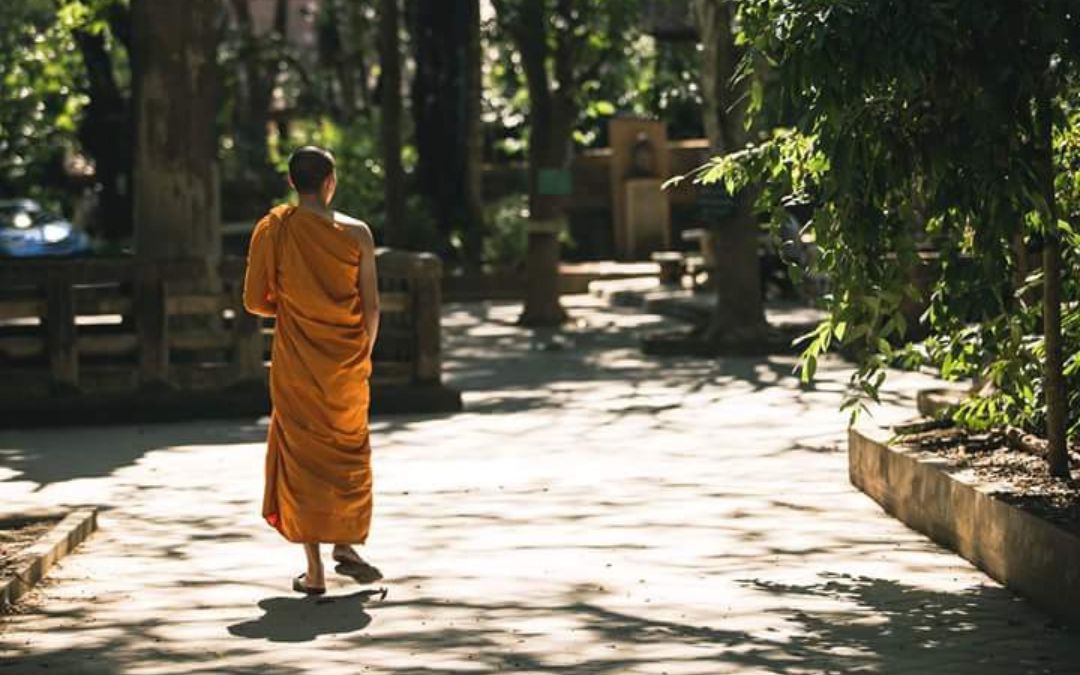
2. Affordable Yet Rewarding
Traveling to underrated destinations lets you experience more for less. Accommodation, transport, and meals are budget friendly, allowing longer stays and deeper connections. A comfortable guesthouse, a bowl of steaming noodles, or a scenic train ride often costs only a few dollars. The value you get here is not measured by price but by the richness of everyday moments.
3. Nature on Your Doorstep
Many of these lesser-known cities sit close to breathtaking natural landscapes. Within minutes, you can reach national parks, waterfalls, or quiet coastlines untouched by mass tourism. You might trek through jungle trails in Vietnam, cycle along mountain passes in Thailand, or kayak among limestone cliffs in Cambodia. Nature is not something you visit; it surrounds you at every turn.
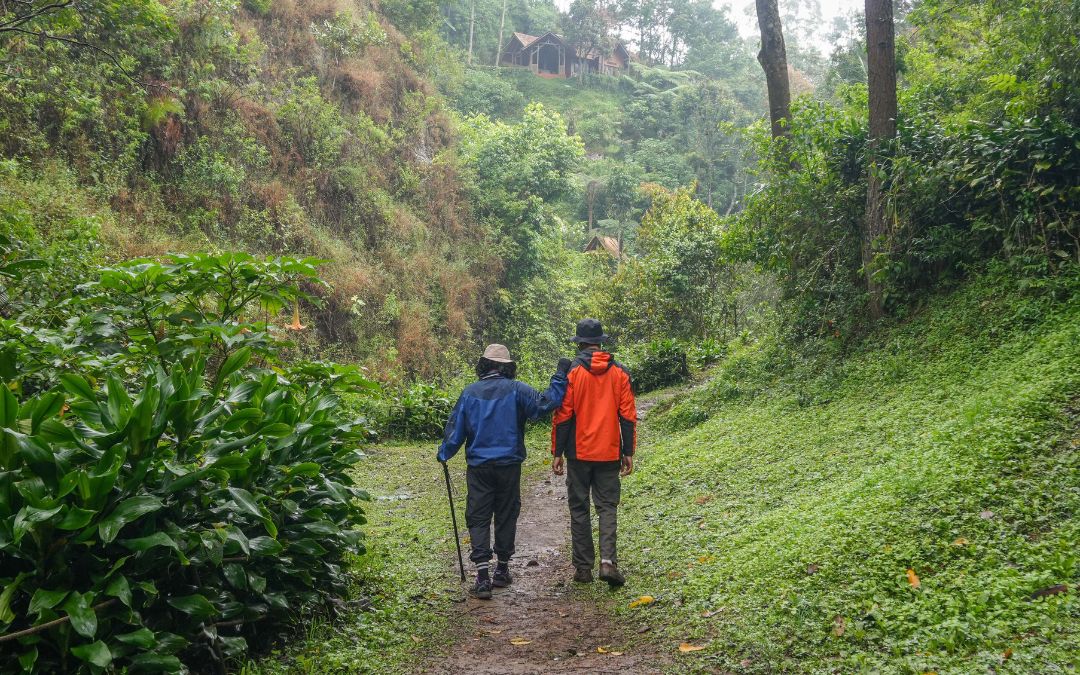
4. Ideal for Slow Travelers and Digital Nomads
If you prefer unhurried journeys, underrated cities offer the perfect pace. Many provide cozy cafés, stable Wi-Fi, and affordable living for remote workers and long-term explorers. Others invite you to log off completely and live in the moment. The 4000 Islands in Laos and Koh Rong Samloem in Cambodia are peaceful corners where time slows, the air feels cleaner, and every day unfolds without rush. Families also find comfort here with safe, friendly environments and activities close to nature.
Top 10 Best Underrated Cities in Southeast Asia Worth Adding to Your Itinerary
Quy Nhon, Vietnam — Blue Coastlines and Local Charm
Among the Southeast Asia underrated cities, Quy Nhon stands out for its quiet beauty and gentle pace. Tucked between Da Nang and Nha Trang, this seaside haven stretches along more than forty kilometers of coastline, where fishing boats float on turquoise waters and local life unfolds without hurry. The city blends unspoiled beaches with a growing sense of modern comfort, giving travelers both authenticity and ease.
Visitors can spend mornings walking the Eo Gio cliffs for sweeping sea views, then relax at Ky Co Beach, where clear shallows reveal coral reefs nearby. The local seafood markets buzz softly at sunset, offering a taste of everyday Vietnamese warmth. Unlike busier resorts, Quy Nhon still feels personal and peaceful, ideal for those who value space and simplicity.
- How to Get There: Flights from Ho Chi Minh City or Hanoi reach Phu Cat Airport in one to one and a half hours. The Reunification Express train from Da Nang or Nha Trang offers scenic views at an affordable price.
- Travel Tip: Rent a motorbike to explore hidden coastal cafes and quiet coves that taxis rarely reach.
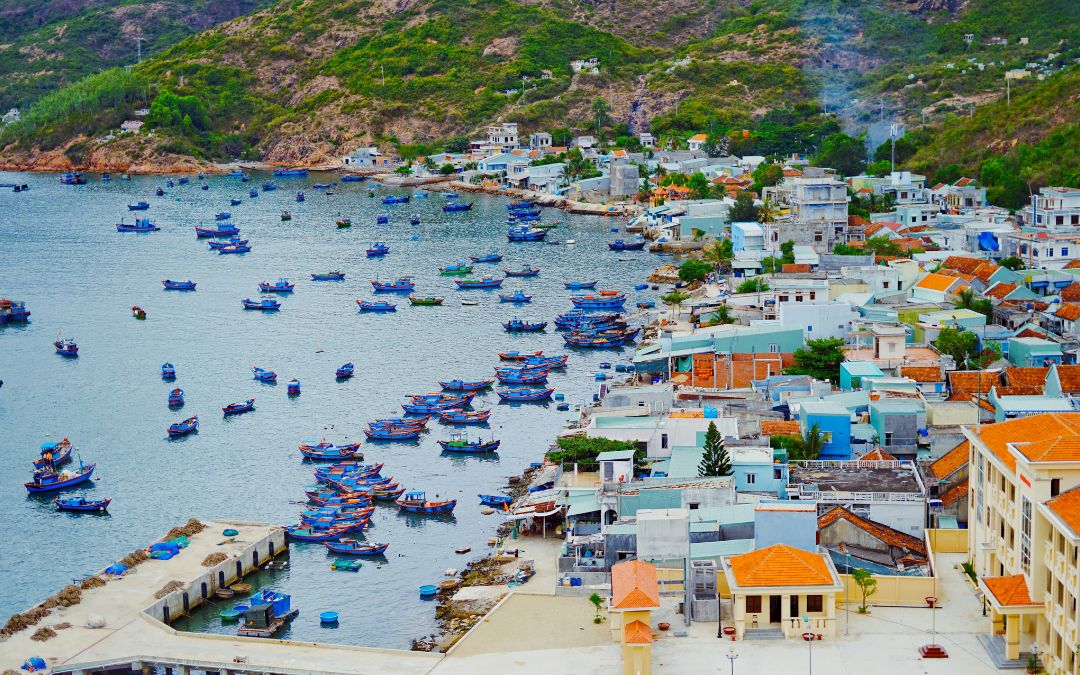
Con Dao, Vietnam — Pristine Beaches and Soulful History
When searching for underrated destinations in Southeast Asia, Con Dao often surprises those who discover it. This small archipelago lies off Vietnam’s southern coast and remains one of the country’s most peaceful retreats. The main island, Con Son, is surrounded by emerald bays and protected forests that belong to Con Dao National Park. Despite postcard-perfect beaches and crystal-clear waters, the islands receive far fewer visitors than Phu Quoc or Nha Trang, making them an oasis of calm.
History adds depth to Con Dao’s charm. The island once held colonial prisons that now serve as moving memorials, while the surrounding seas are home to coral reefs and nesting turtles. Visitors can combine quiet reflection with adventure by diving, hiking, or watching the sunset from Dam Trau Beach.
- How to Get There: Daily flights from Ho Chi Minh City take under an hour. Ferries from Vung Tau or Soc Trang operate year-round and offer a scenic option for slow travelers.
- Travel Tip: Stay near the coast during the dry season from March to September to catch the turtle nesting spectacle at Bay Canh Island.
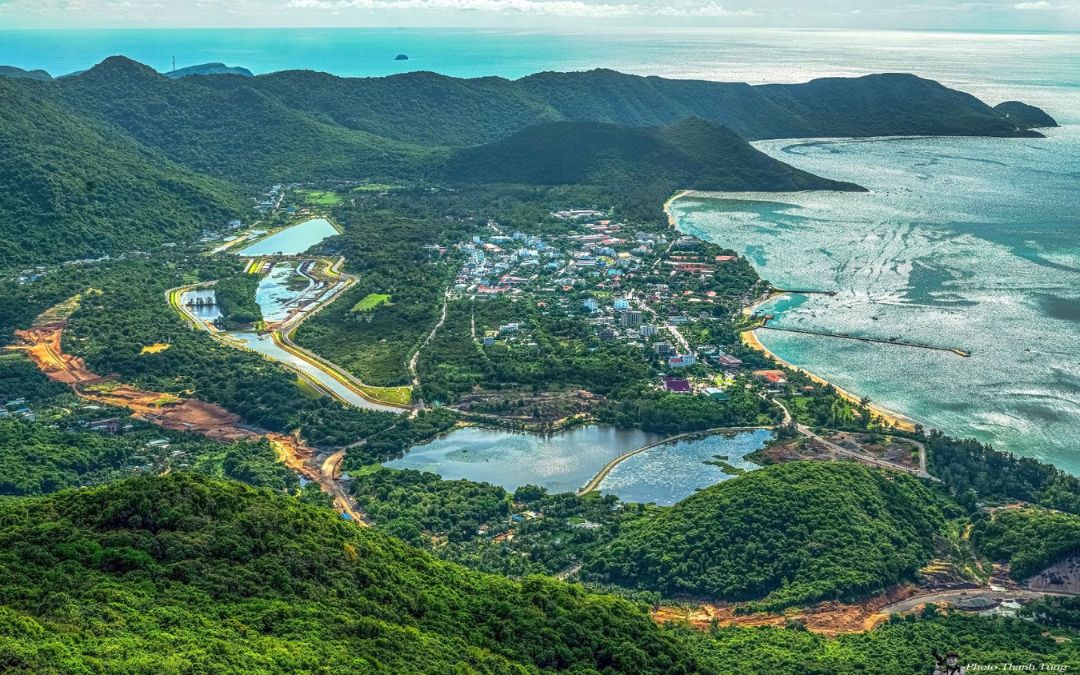
Con Dao Islands surprise visitors with untouched beauty and quiet strength.
> See tour: Splendours of Vietnam Beach Tour
Ipoh, Malaysia — Coffee, Cave Temples, and Colonial Streets
Although it sits conveniently between Kuala Lumpur and Penang, Ipoh rarely appears on standard itineraries. Once a tin-mining hub, this Malaysian gem now thrives on its mix of colonial architecture, cave temples, and café culture. The pace is unhurried, the streets wide and leafy, and the air filled with the scent of white coffee.
Ipoh’s Old Town charms visitors with restored shophouses and murals by Ernest Zacharevic, while nearby limestone hills hide magnificent cave temples such as Kek Lok Tong and Sam Poh Tong. For relaxation, Banjaran Hotsprings Retreat offers natural pools and steam caves set in a lush valley. Affordable and full of character, Ipoh rewards travelers who take time to wander.
- How to Get There: High-speed ETS trains from Kuala Lumpur arrive in two and a half hours. Buses and cars from Penang take about two hours.
- Travel Tip: Visit early morning for cooler weather and try the city’s famous white coffee with kaya toast at an old-style café before sightseeing begins.
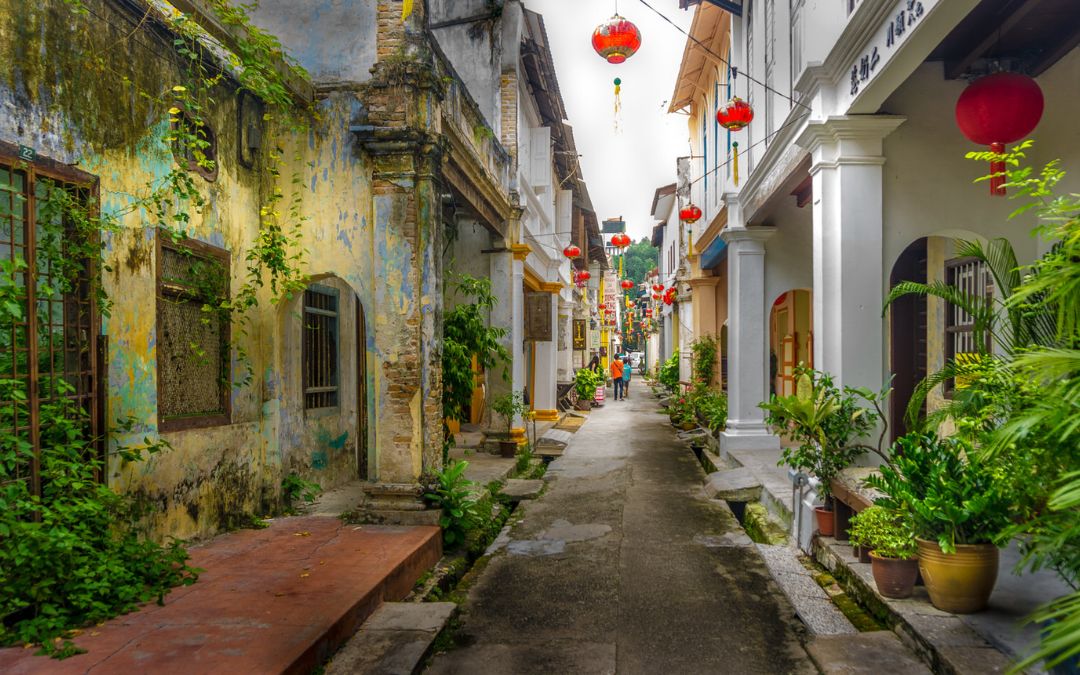
Ipoh charms with coffee aroma, cave temples, and colonial grace.
Kuching, Malaysia (Borneo) — The “Cat City” of Adventure
As you drift along the Sarawak River at sunset, it becomes clear why Kuching deserves a place on the list of Southeast Asia’s most underrated cities. The glow of lanterns reflects on the water, music drifts from open-air cafés, and locals gather along the waterfront as if time has paused. This riverside capital of Sarawak holds a rare balance between wild nature and urban soul.
The city’s easy rhythm invites exploration. Wander the Old Courthouse and Carpenter Street to feel the colonial past blending with street art and coffee aromas. A short trip leads you into Borneo’s green world, where orangutans swing freely at Semenggoh Wildlife Centre and the cliffs of Bako National Park drop into the South China Sea. Kuching’s charm lies not in grandeur but in its ability to make travelers feel instantly at home.
- How to Get There: Kuching International Airport connects directly with Kuala Lumpur, Singapore, and Penang. The city center is just a short ride away.
- Travel Tip: Visit during the Rainforest World Music Festival in July to see the city transform into a vibrant mix of cultures, rhythms, and nature.

Kuching glows softly along the Sarawak River as lanterns meet jungle skies.
Kampot, Cambodia — Riverside Bliss and World-Famous Pepper
Kampot is a gentle reminder that the best Southeast Asia hidden gems are not always remote islands. Nestled between hills and riverbanks in southern Cambodia, this sleepy town charms visitors with its French-era architecture, riverside cafés, and timeless rhythm. The scent of world-famous Kampot pepper fills the air, blending with the aroma of local seafood cooked fresh by the water.
Life here moves with the current of the Praek Tuek Chhu River. Visitors kayak at sunset, cycle through rice fields, or head up to Bokor Mountain for misty views over the Gulf of Thailand. The town’s small size invites exploration by foot, revealing art galleries, boutique stays, and warm smiles at every corner.
- How to Get There: From Phnom Penh, Kampot can be reached by bus in about four hours or by private car in three. The route from Sihanoukville takes roughly two hours through scenic countryside.
- Travel Tip: Visit a family-run pepper farm to learn how each vine is hand-harvested. The tasting experience pairs perfectly with a local crab lunch from nearby Kep.
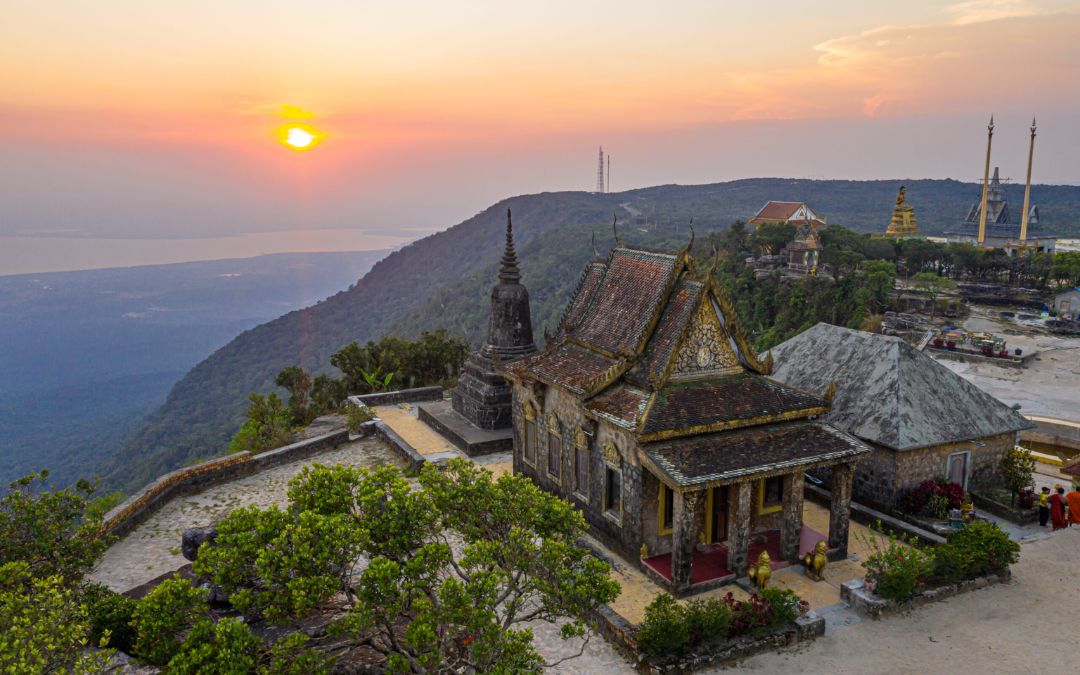
Kampot offers riverside peace and pepper fields kissed by the sea breeze.
Battambang, Cambodia — Bamboo Trains and Colonial Beauty
Battambang is one of Cambodia’s most underrated cities, a place defined by quiet confidence and creative soul. It is both historic and artistic, a place where colonial façades meet modern creativity. The city lines the peaceful Sangkae River, shaded by tamarind trees and dotted with art studios that give Battambang its youthful charm.
Travelers find themselves immersed in local life rather than tourist traffic. The famous Bamboo Train glides through rice paddies, while Phnom Sampov offers sunset bat flights and sweeping valley views. Art lovers can visit Phare Ponleu Selpak, a performing arts school that nurtures young Cambodian talent through circus and dance.
- How to Get There: Buses from Siem Reap or Phnom Penh take four to five hours, while a scenic river boat from Siem Reap offers a unique six-hour journey through floating villages.
- Travel Tip: Stay a few nights instead of a quick stopover. The longer you linger, the more Battambang’s charm and creative energy reveal themselves.
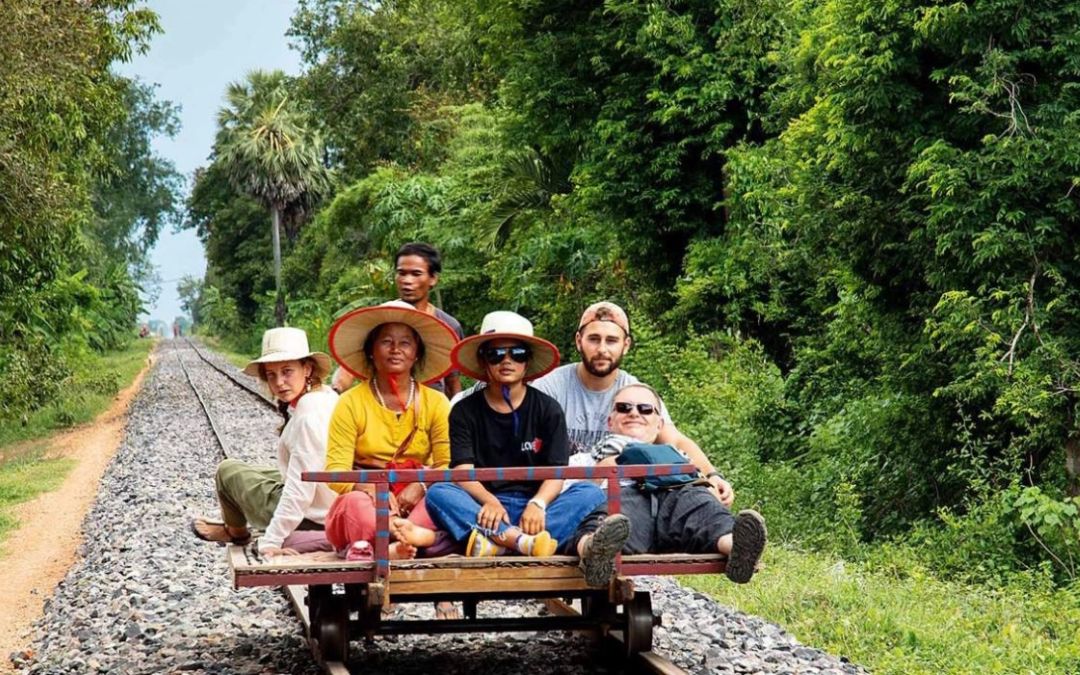
Battambang blends history and art where bamboo trains hum through rice fields.
Pakse, Laos — Gateway to Waterfalls and Coffee Highlands
Pakse is often left off the typical travel map, yet it holds one of the richest experiences among Southeast Asia’s underrated destinations. Set where the Mekong meets the Xe Don River, this small city is the perfect base for exploring the Bolaven Plateau, a highland region of waterfalls, coffee plantations, and ethnic villages.
Travelers come for the views but stay for the rhythm. The twin Tad Fane and Tad Yuang waterfalls thunder into lush jungle valleys, while local farmers welcome visitors to taste freshly roasted coffee grown under cool mountain mist. The Bolaven motorbike loop remains one of Laos’s most scenic adventures, winding past rivers, farms, and wooden stilt homes.
- How to Get There: Pakse International Airport connects with Vientiane, Luang Prabang, Bangkok, and Siem Reap. Overland travelers from Thailand can cross the border at Chong Mek and reach Pakse in about two hours.
- Travel Tip: Bring a light jacket even in dry season from November to February. The highlands can be cool, especially at dawn when mist floats above the waterfalls.

Waterfalls near Pakse thunder through misty forests and coffee hills.
> See tour to Pakse: The Very Best Of Laos Tour
Nan, Thailand — The “Whispering” Heritage City
If you are searching for a destination that still feels untouched, Nan in northern Thailand is one of the most authentic places left in Southeast Asia. Resting quietly near the Laos border, this small city was once part of the ancient Lanna Kingdom. Today, it preserves that old-world grace in teak houses, handwoven textiles, and serene temples that whisper history through murals and bells.
Nan’s highlight is Wat Phumin, famous for its “Whispering of Love” mural and detailed Lanna art. Outside the city, Doi Phu Kha National Park unfolds with misty peaks and scenic trails. Travelers come here for slow mornings, mountain air, and warm local smiles — a rare combination that defines Thailand before mass tourism.
- How to Get There: Daily flights from Bangkok reach Nan in about seventy-five minutes. Buses from Chiang Mai take six to seven hours through lush mountain roads.
- Travel Tip: Rent a bicycle at dawn to see monks collecting alms and feel the town awaken with soft light and temple bells.
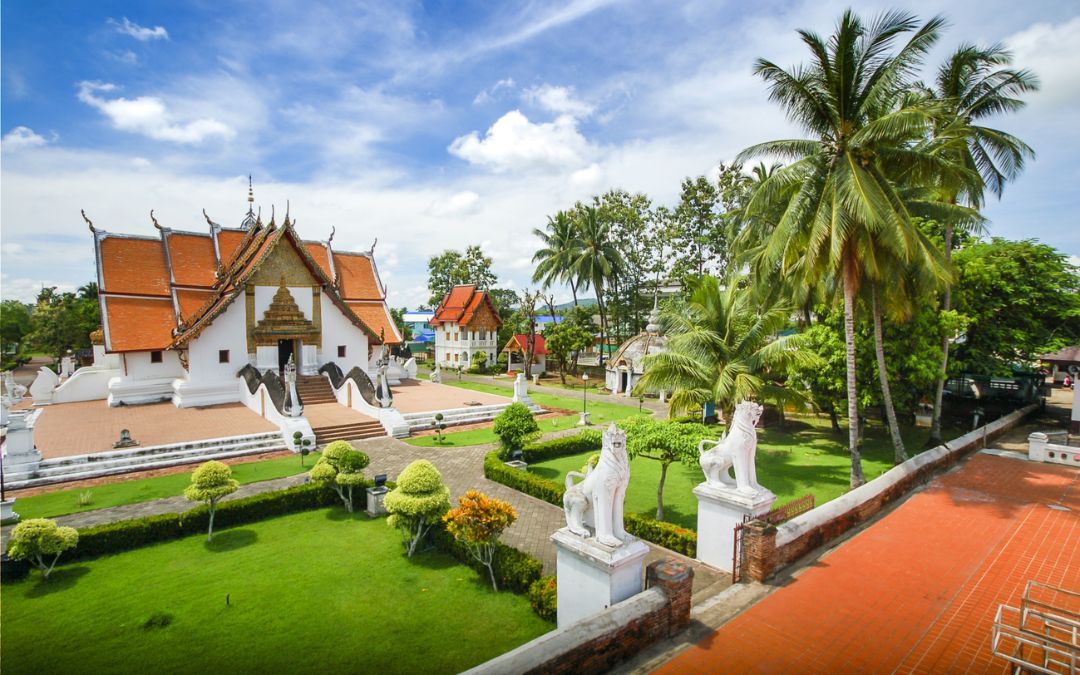
Nan whispers Lanna heritage through murals, temples, and mountain air.
Trang, Thailand — Peaceful Islands, Clear Waters
While travelers rush to Phuket and Krabi, Trang remains one of Thailand’s best-kept coastal secrets. This peaceful province along the Andaman Sea still carries the charm of old Thailand — calm villages, hidden islands, and turquoise waters that stretch far beyond the tourist trail. It is a sanctuary for those who crave quiet beaches and local authenticity.
Island hopping here feels intimate. Swim through the glowing tunnel of the Emerald Cave, kayak along mangroves in Hat Chao Mai National Park, or rest under palm trees on Koh Mook and Koh Kradan. The seafood is exceptional, caught daily by local fishermen and served in simple beach shacks with sea views.
- How to Get There: Trang Airport offers direct flights from Bangkok. From Trang town, ferries and speedboats depart regularly to nearby islands such as Koh Mook and Koh Ngai.
- Travel Tip: Visit between November and April for calm seas and clear visibility. Ask locals about unlisted snorkeling spots near Koh Kradan — they often know the quietest reefs.
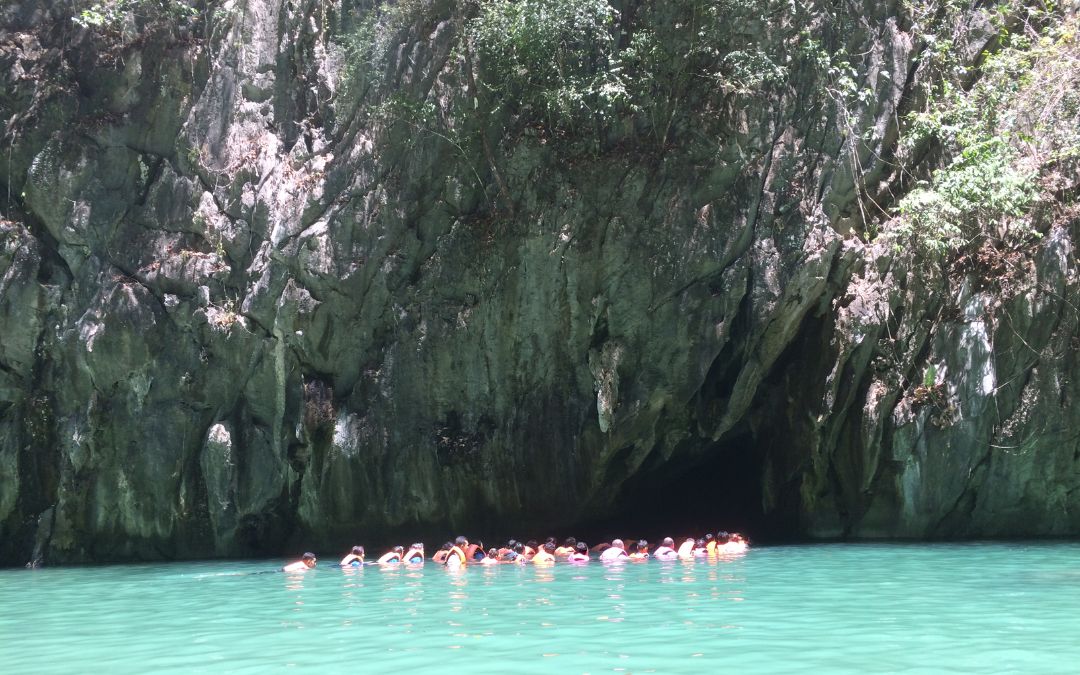
Trang hides emerald caves, coral reefs, and sleepy fishing villages.
> Read more: Rising Destination In Thailand For Tourism: Where to Visit Before Everyone Else
Malang, Indonesia — Volcano Views and Creative Vibes
For travelers searching beyond Bali’s beaches, Malang is a cool breath of East Java’s highlands and one of Southeast Asia underrated cities. The air is crisp, the streets are lined with colonial-era houses, and the scent of freshly roasted coffee drifts from morning markets. Creative energy flows through its art spaces and colorful neighborhoods, giving the city a youthful, welcoming spirit.
Malang is also a gateway to spectacular nature. The sunrise from Mount Bromo paints the sky in shades of gold, while Tumpak Sewu Waterfall thunders below jungle cliffs. Back in town, Jodipan Rainbow Village showcases how art can transform an entire community. Each corner feels alive with stories, whether told through street murals or shared over a cup of local Arabica.
- How to Get There: Trains from Surabaya take about three hours, and daily flights from Jakarta reach Malang in just forty-five minutes. Tours to Mount Bromo depart easily from the city.
- Travel Tip: Start your volcano trip before dawn to witness Bromo’s famous sunrise, then visit a nearby coffee plantation to warm up with fresh Javan brew.
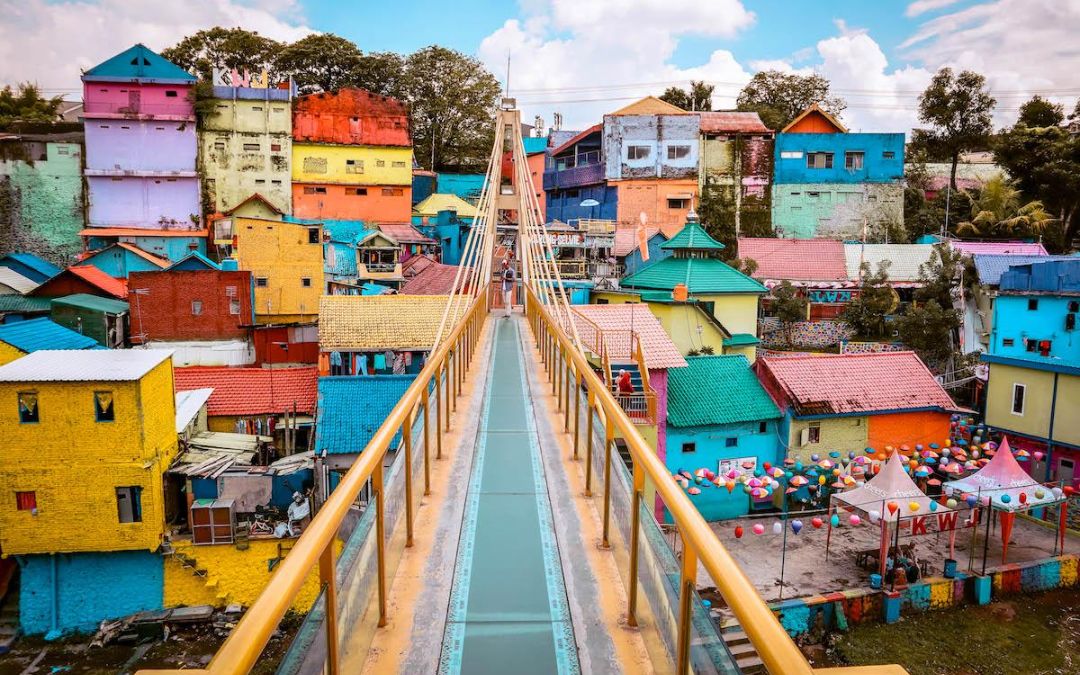
Malang awakens creativity beneath volcano peaks and rainbow streets.
Essential Travel Tips for Exploring Southeast Asia’s Hidden Gems
Traveling through Southeast Asia’s underrated destinations invites you to slow down, connect with locals, and embrace a more mindful style of exploration. From Laos’s misty mountains to Indonesia’s volcanic trails, these simple tips help you make the most of every quiet corner of the region.
- Respect the local rhythm: Life in smaller towns moves calmly and naturally. Dress modestly, greet people politely, and take time to learn about local customs. A respectful traveler is always welcome.
- Carry cash: ATMs are limited in rural areas. Keep small notes of local currency for markets, food stalls, and transport. A daily budget of 25 to 50 USD is often enough for comfort and flexibility.
- Support the community: Stay in homestays, eat at family cafés, and join community-led tours. Experiences like pepper farms in Kampot or eco-guides in Phong Nha help locals earn directly from tourism.
- Plan your routes with care: Reaching hidden places takes patience. Buses, boats, and trains move slower than in big cities. Use this time to enjoy the scenery and connect with fellow travelers.
- Stay connected when needed: Buy a local SIM card or download offline maps. Remote regions like Ha Giang or Bolaven Plateau may have weak signals, so prepare ahead but enjoy the quiet when it comes.
- Protect the nature you visit: Follow park rules, avoid single-use plastic, and stay on marked paths. Places like Bako National Park and Phong Nha Caves remain beautiful only when travelers leave no trace.
The true beauty of travel often hides in places that few expect. These Southeast Asia underrated cities invite you to slow down, taste local life, and see the region’s heart beyond the tourist path.
Ready to uncover them all? Let Asia Pioneer Travel craft your journey through these hidden cities and turn every stop into an unforgettable adventure.


